Strengths And Weaknesses Essay
Outline of Essay:
- Introduction
- Strengths
- Weaknesses
- Identifying Strengths and Weaknesses
- Developing Strengths
- Overcoming Weaknesses
- Balancing Strengths and Weaknesses
Introduction
Strengths and weaknesses refer to an individual’s positive and negative attributes. They can be personal or professional and can influence an individual’s ability to succeed in various areas of life. This essay will explore the definition of strengths and weaknesses and their importance in personal and professional development. We will also discuss strategies for identifying and developing strengths, overcoming weaknesses, and balancing the two to achieve personal and professional success.
Strengths
Strengths refer to an individual’s positive attributes or qualities that contribute to their personal and professional success. These can include skills, talents, personality traits, and values. Personal strengths can include qualities such as empathy, resilience, creativity, and a positive attitude. Professional strengths can include skills such as communication, leadership, problem-solving, and time management.
Identifying and utilizing strengths can boost an individual’s self-esteem and confidence in their abilities. Using one’s strengths can help individuals achieve their full potential and excel in their personal and professional lives. Identifying and using strengths can also help individuals set and achieve their goals more effectively.
Weaknesses
Weaknesses refer to an individual’s negative attributes or areas where they lack skills or knowledge. These can hinder personal and professional growth and limit success. Personal weaknesses can include things such as a lack of self-discipline, difficulty managing emotions, and poor communication skills. Professional weaknesses can include a lack of technical skills, poor time management, and difficulty working in a team.
Ignoring weaknesses can prevent individuals from developing new skills and knowledge and limit their growth potential. Weaknesses can hinder progress and prevent individuals from achieving their goals. Ignoring weaknesses can prevent individuals from achieving success in their personal and professional lives.
Identifying Strengths and Weaknesses
Self-assessment is a method of identifying strengths and weaknesses through introspection and reflection. Personality tests, such as the Myers-Briggs Type Indicator (MBTI), can help individuals understand their personality traits and identify their strengths and weaknesses. Asking for feedback from trusted individuals, such as friends, family, or colleagues, can provide valuable insight into one’s strengths and weaknesses.
A professional assessment can help individuals identify their strengths and weaknesses in the workplace. Performance reviews can provide feedback on an individual’s job performance and help identify areas for improvement. Skills assessments, such as tests or training programs, can help individuals identify their strengths and weaknesses in specific areas of their job.
Developing Strengths
Developing strengths involves utilizing strategies such as practice, seeking feedback and coaching, and pursuing learning and development opportunities. Practice and persistence are essential for developing and honing skills and talents. Regular practice can help individuals improve their performance and achieve mastery in their areas of strength.
Seeking feedback and coaching from others, such as mentors or coaches, can provide valuable guidance and help individuals develop their strengths. Pursuing learning and development opportunities, such as training programs or workshops, can help individuals build on their strengths and develop new skills.
Developing and utilizing strengths can boost an individual’s confidence in their abilities. Developing strengths can help individuals improve their performance in their personal and professional lives. Developing strengths can open up new opportunities for personal and professional growth and success.
Overcoming Weaknesses
Overcoming weaknesses involves strategies such as acknowledging and accepting weaknesses, seeking support and guidance, and pursuing learning and development opportunities. Acknowledging and accepting weaknesses is the first step in overcoming them. It involves being honest with oneself about areas where improvement is needed.
Seeking support and guidance from others, such as mentors or coaches, can provide valuable guidance and help individuals overcome their weaknesses. Pursuing learning and development opportunities, such as training programs or workshops, can help individuals overcome their weaknesses and develop new skills.
Balancing Strengths and Weaknesses
Focusing on strengths while addressing weaknesses can help individuals maintain their confidence while working to improve areas where they are weaker. Leveraging strengths to overcome weaknesses involves using strengths to find solutions to weaknesses. Finding support from others, such as mentors or coaches, can provide guidance and help individuals overcome their weaknesses.
FAQs
What are good examples of strengths?
Good examples of strengths can include skills such as communication, leadership, problem-solving, and time management, as well as personal qualities such as empathy, resilience, creativity, and a positive attitude.
How do you start weaknesses?
To start identifying weaknesses, it can be helpful to engage in self-reflection and introspection to identify areas where you struggle or lack skills. Seeking feedback from others can also provide valuable insight.
Download the Pdf of the Essay On Strengths And Weaknesses
DOWNLOAD PDF
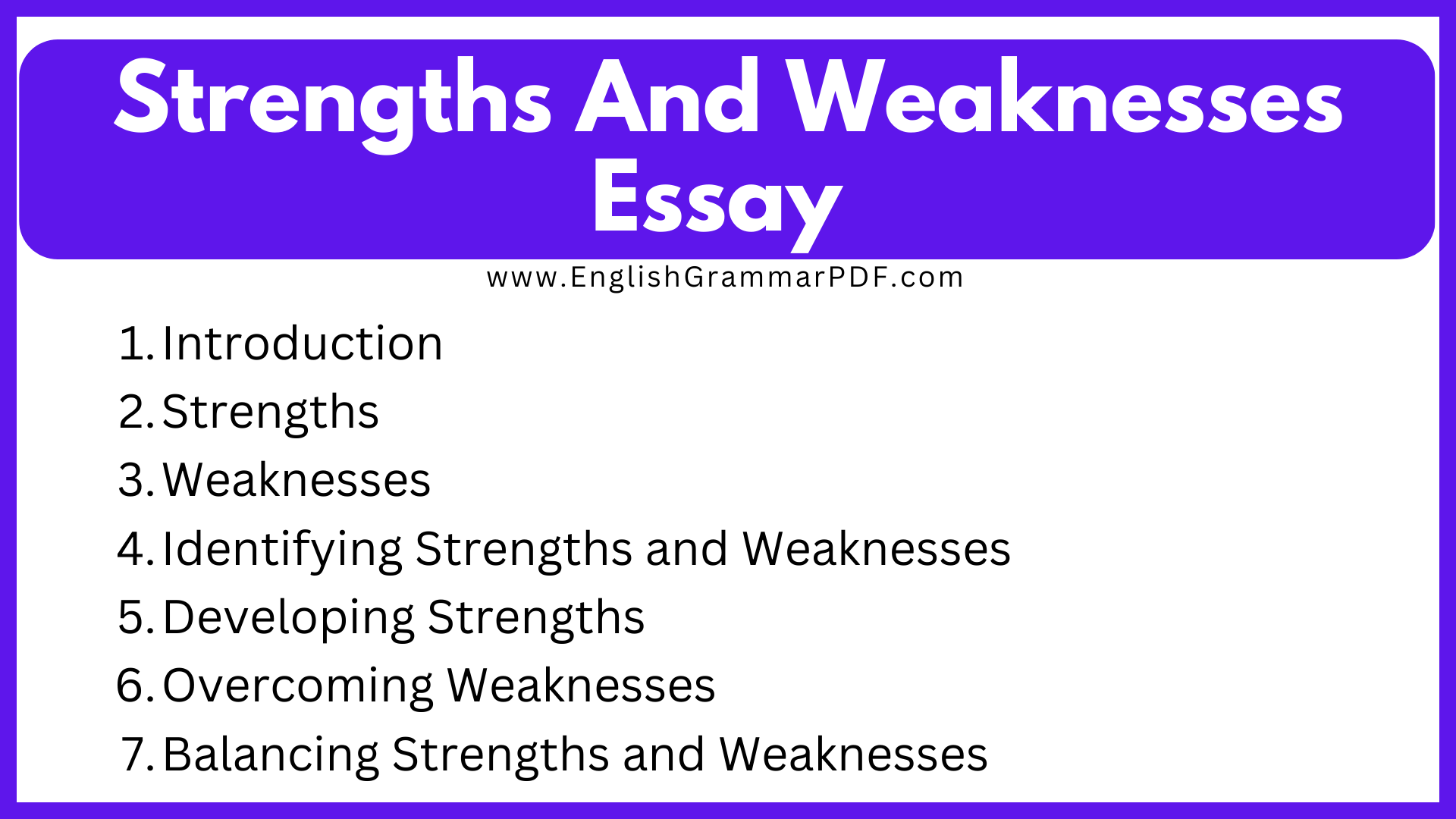
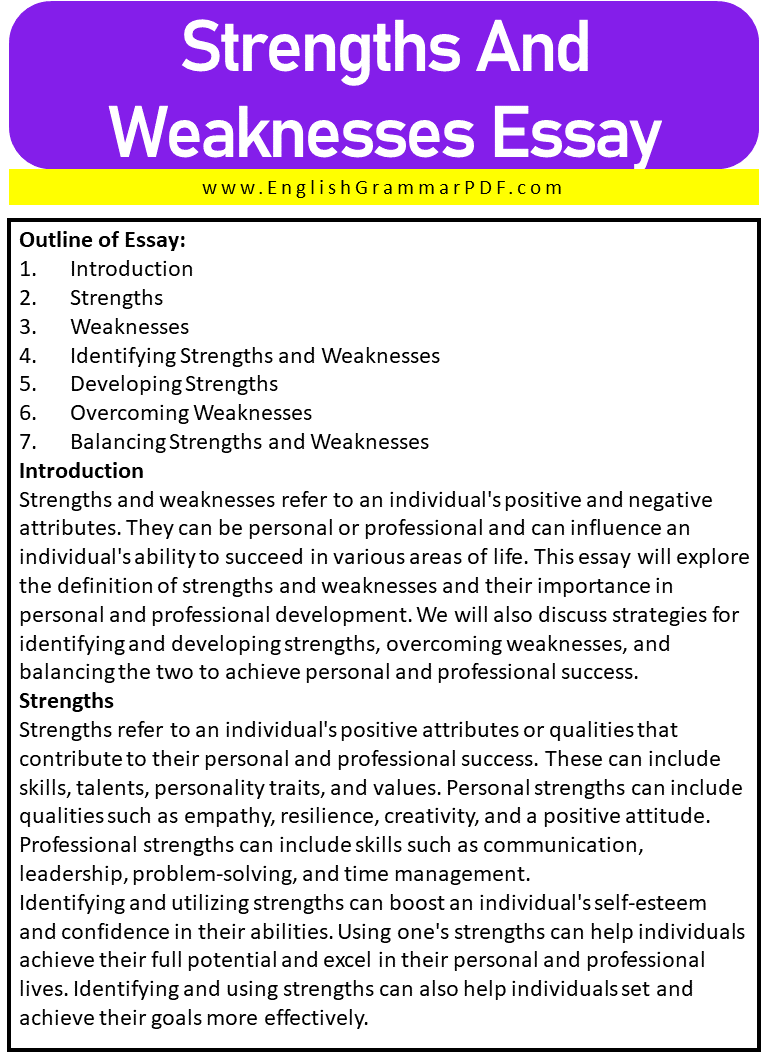
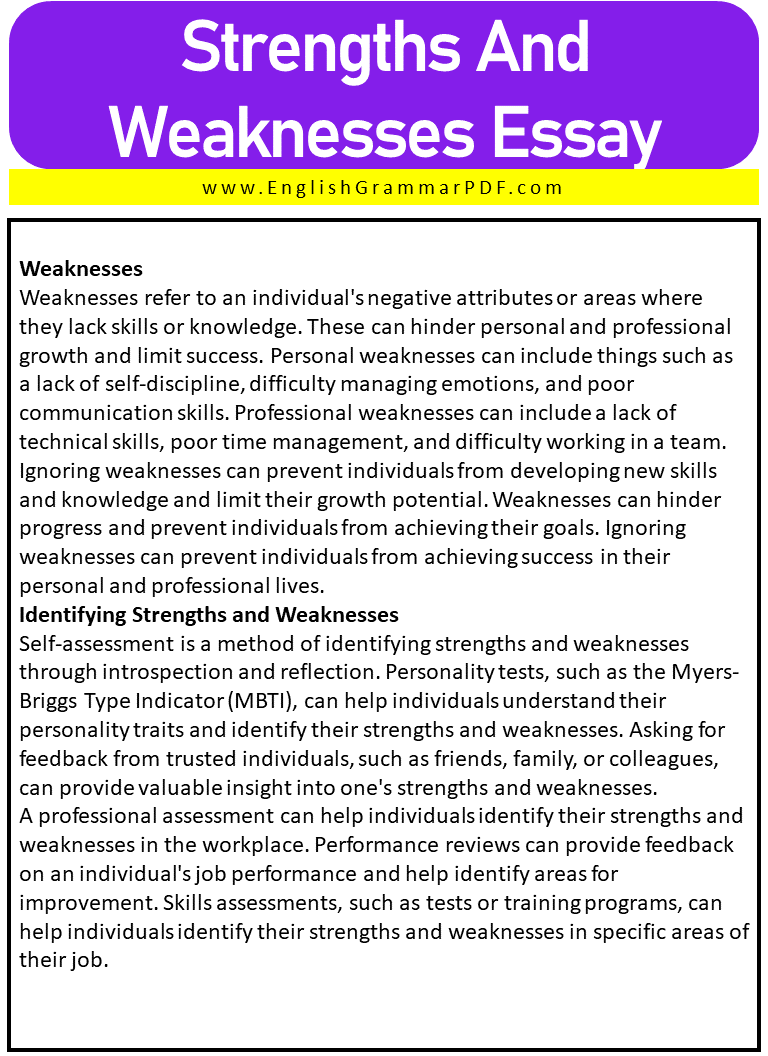
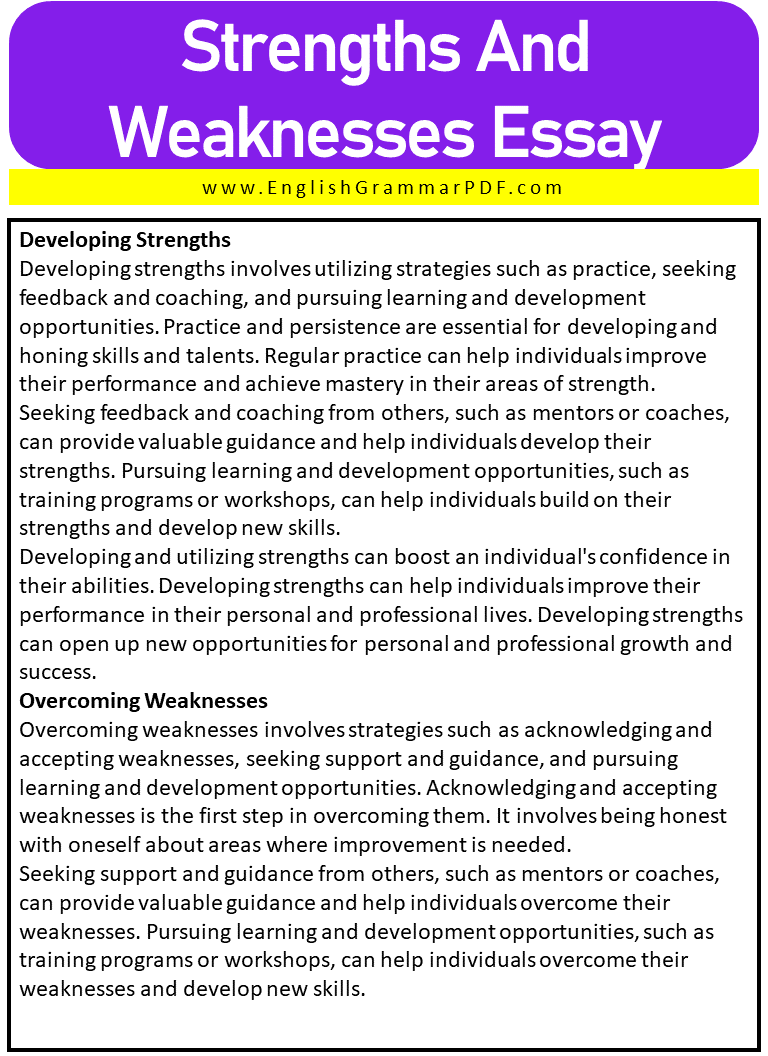
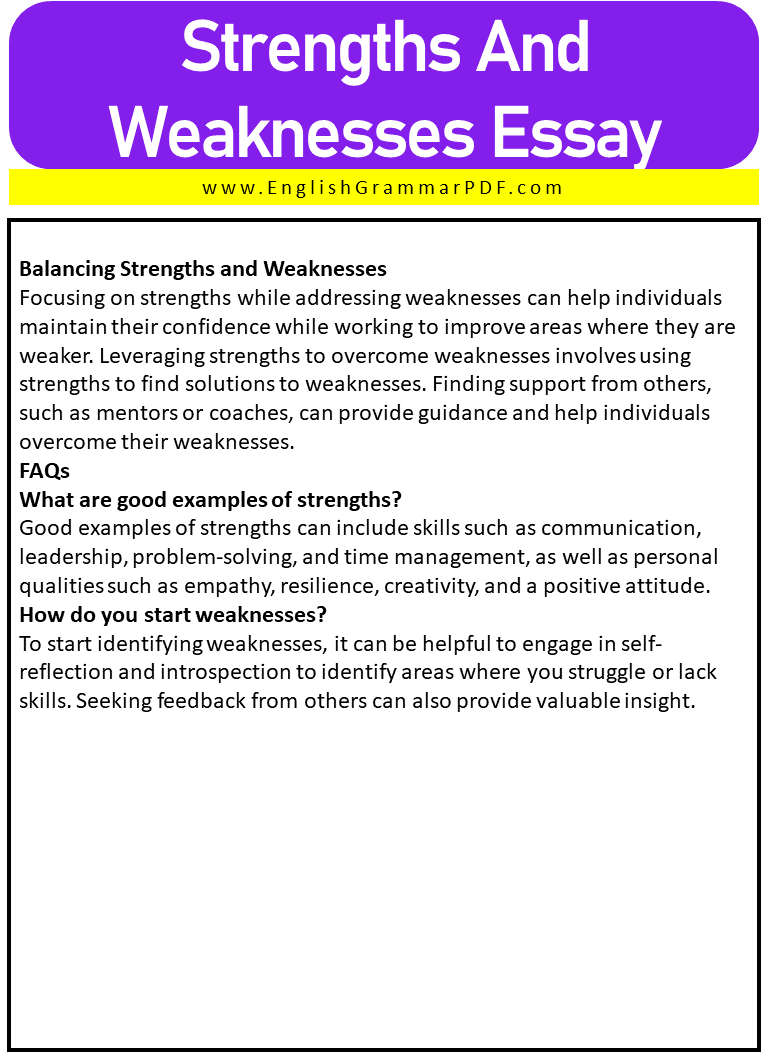
Read More Essays:


